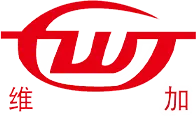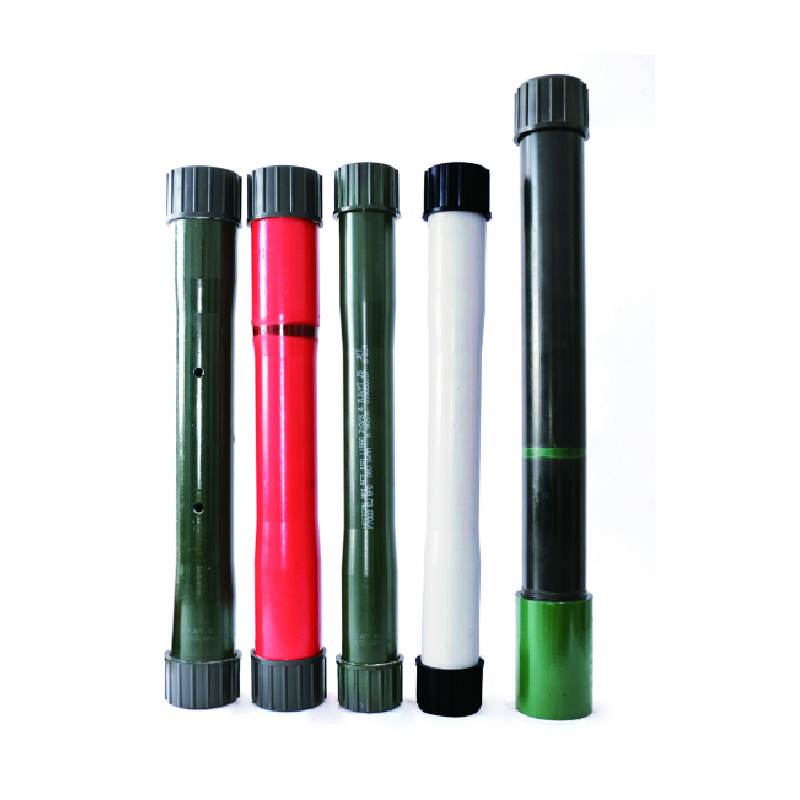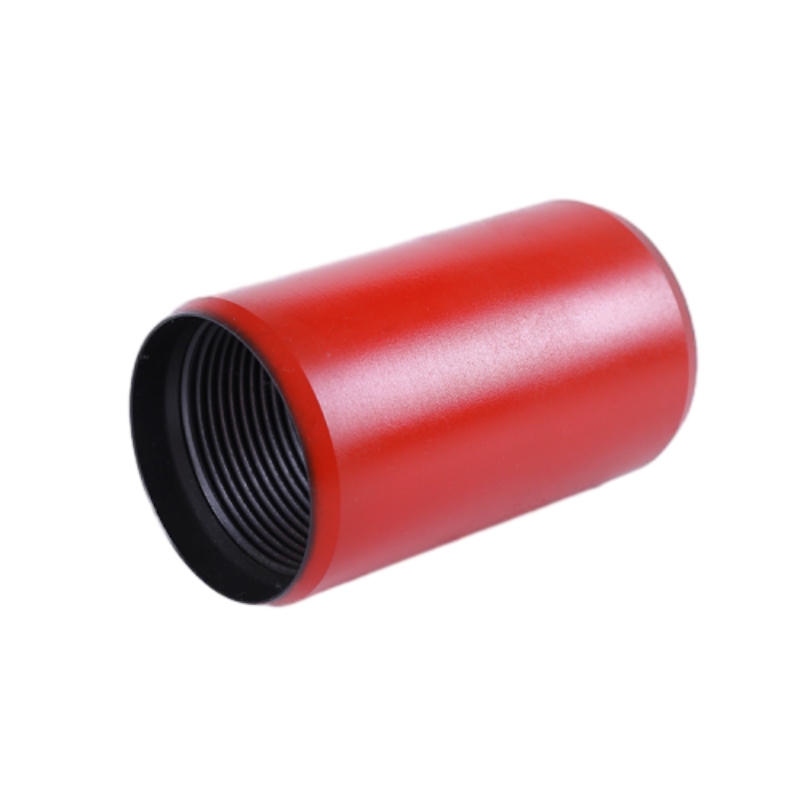Leading Pup Joint Manufacturers for Oil & Gas Tubing
The Critical Role of Tubing Pup Joints in Modern Energy Operations
In the intricate world of oil and gas exploration and production, precision and reliability are paramount. Among the countless components that ensure the seamless flow of operations, pup joint manufacturers play a pivotal role. A pup joint is a pipe of non-standard length, used to adjust the length of tubing or casing strings in a well. These seemingly small components are critical for achieving the exact required length of a string, compensating for variations, or spacing out downhole equipment accurately. Their application extends across various segments of the petroleum industry, ensuring optimal well completion and production. Understanding the manufacturing prowess, technical specifications, and strategic importance of these components is vital for B2B stakeholders in the energy sector.
The demand for high-quality tubing pup joints is steadily growing, driven by complex drilling environments, deeper wells, and the need for enhanced safety and efficiency. As the global energy landscape evolves, the focus on superior materials, advanced manufacturing techniques, and stringent quality control has become non-negotiable for leading suppliers in this niche market. This comprehensive guide delves into the specifics, offering insights into industry trends, technical parameters, and the advantages offered by top-tier suppliers.
Industry Trends and Technological Evolution in Pup Joint Manufacturing
The landscape for pup joint manufacturers is continuously shaped by evolving industry demands. Current trends highlight a significant shift towards higher-strength materials and specialized alloys to withstand increasingly harsh downhole conditions, including extreme pressures, high temperatures, and corrosive environments containing H2S and CO2. There's also a growing emphasis on precision engineering, with CNC machining capabilities becoming standard to ensure exact thread profiles and superior connections, minimizing the risk of leaks and failures. Digitalization is influencing manufacturing processes, enabling better quality control, traceability, and streamlined production.
Furthermore, the industry is seeing an increased demand for custom-length pup joints, moving away from standard lengths to reduce on-site cutting and welding, thereby enhancing safety and operational efficiency. Sustainability initiatives also play a role, with some manufacturers exploring more energy-efficient production methods and materials with longer lifespans, contributing to reduced waste and environmental impact. The integration of advanced non-destructive testing (NDT) techniques, such as eddy current testing, magnetic particle inspection, and ultrasonic testing, ensures every product meets or exceeds API (American Petroleum Institute) standards and client specifications, solidifying trust in the supply chain for critical applications like pup joint oil and gas operations.
Detailed Manufacturing Process: From Raw Material to Finished Product
The production of a high-quality tubing pup joint involves a meticulous multi-stage process, ensuring durability and performance in demanding environments. It typically begins with the selection of premium raw materials, primarily seamless steel pipes conforming to API Spec 5CT standards, such as J55, K55, N80, L80, P110, and Q125 grades, chosen for their specific yield strength and corrosion resistance properties.
The typical manufacturing flow includes:
- Material Cutting: Raw pipe is cut to precise, specified lengths, accounting for upset forging if required.
- Upset Forging (if applicable): For certain designs, pipe ends are heated and forged to increase wall thickness, enhancing joint strength for threaded connections.
- Heat Treatment: Materials undergo specific heat treatment processes (e.g., normalizing, quenching, tempering) to achieve desired mechanical properties like hardness, strength, and toughness, crucial for handling high internal pressures and external loads.
- CNC Machining: State-of-the-art CNC lathes precisely machine the pipe ends to create threads (e.g., EUE, NUE, BTC, LTC, STC) conforming to API 5B standards. This process ensures dimensional accuracy, perfect thread profile, and superior surface finish, critical for reliable connections.
- Cleaning and Deburring: After machining, joints are thoroughly cleaned to remove swarf, burrs, and contaminants.
- Non-Destructive Testing (NDT): Each pup joint undergoes rigorous NDT, including Magnetic Particle Inspection (MPI) or Eddy Current Testing (ECT) for surface defects, and Ultrasonic Testing (UT) for internal flaws. This step is crucial for identifying any material discontinuities that could compromise integrity.
- Dimensional and Visual Inspection: Precise measurements are taken to verify length, diameter, wall thickness, and thread dimensions. Visual inspections ensure no surface imperfections or damage.
- Hydrostatic Pressure Testing: Joints are subjected to high internal pressure to confirm their leak-tightness and structural integrity under operational conditions, typically exceeding API requirements.
- Surface Treatment/Coating: Depending on application, joints may receive surface treatments like phosphating or specific coatings to enhance corrosion resistance and reduce galling during makeup.
- Marking and Packaging: Products are marked with grade, size, manufacturer's ID, and batch number. They are then threaded protectors and packed securely to prevent damage during transit.
This meticulous approach, from material selection to final inspection, ensures that each pup joint offers exceptional strength, corrosion resistance, and longevity, making it reliable for critical applications in petrochemical, metallurgy, and water supply industries where robust piping solutions are essential. The adherence to international standards like ISO 9001 and API Spec 5CT is fundamental for all reputable pup joint manufacturers.
Key Product Specifications and Parameters
Selecting the correct pup joint requires a clear understanding of its technical specifications. The following table outlines common parameters for tubing pup joints, showcasing the typical range and critical considerations for buyers and engineers. This data reflects industry standards and best practices among leading pup joint manufacturers.
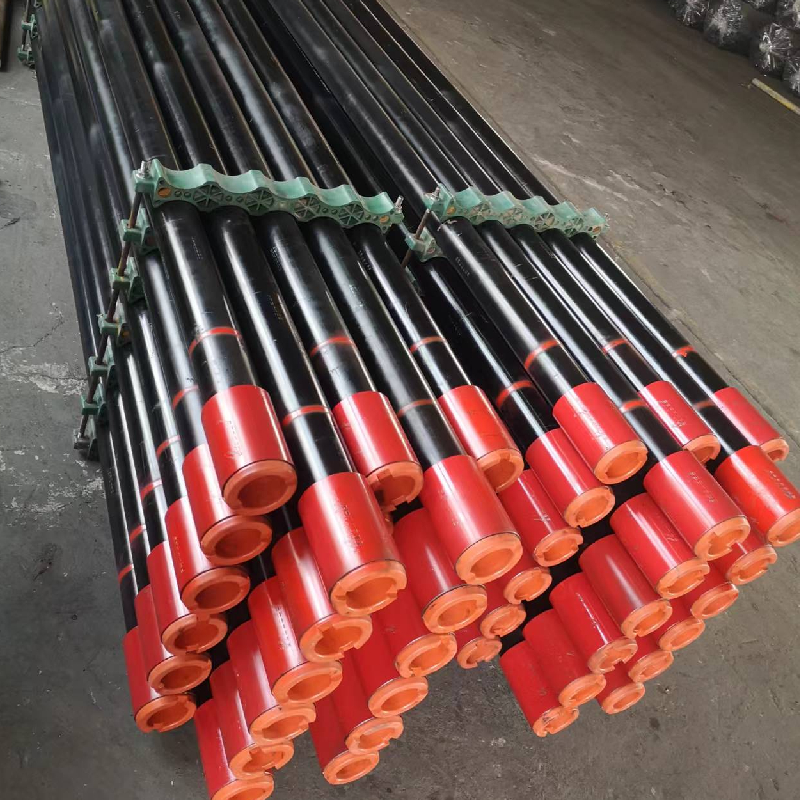
Image: High-precision machining of pup joints ensures optimal performance.
| Parameter | Typical Range/Options | Description/Standard |
|---|---|---|
| Outer Diameter (OD) | 2-3/8" (60.3 mm) to 4-1/2" (114.3 mm) | Common tubing sizes as per API 5CT. |
| Wall Thickness (WT) | Schedule 40, 80, 160 or custom | Varies based on pressure requirements and material grade. |
| Length | 2 ft (0.61 m) to 12 ft (3.66 m), custom lengths available | Designed to provide specific space-out adjustments. |
| Material Grade | J55, K55, N80 (1 & Q), L80 (1, 9Cr, 13Cr), P110, Q125 | API 5CT compliant steel grades, chosen for strength and corrosion resistance. |
| Connection Type | EUE (External Upset End), NUE (Non-Upset End), BTC (Buttress Thread Casing), LTC (Long Thread Casing), STC (Short Thread Casing) | API 5B threading standards, ensuring compatibility with existing strings. |
| End Finish | Threaded & Coupled (T&C), Plain End | Refers to the pipe ends’ readiness for connection. |
| Hydrostatic Test Pressure | Up to 10,000 PSI (68.9 MPa) or higher | Verifies structural integrity and leak resistance. |
| Applicable Standards | API Spec 5CT, API Spec 5B, ISO 9001, ANSI, ASTM | Ensures global compatibility and quality assurance. |
The selection of precise parameters is critical to ensuring the longevity and integrity of the entire downhole assembly, particularly in challenging pup joint oil and gas extraction environments where pressures and temperatures can fluctuate dramatically.
Application Scenarios and Technical Advantages
Tubing pup joint components are indispensable in various critical applications within the oil and gas industry and beyond. Their primary function is to provide precise length adjustments for tubing and casing strings, allowing operators to land packers, set downhole tools, and align various components accurately within the wellbore. This flexibility is crucial in complex well designs, including horizontal and deviated wells, where standard pipe lengths are insufficient for specific spacing requirements.
Beyond oil and gas, pup joints find utility in demanding industrial sectors such as petrochemical processing, where precise piping lengths are required for intricate plant layouts, and in metallurgical applications for fluid conveyance under high temperatures. In municipal water supply and drainage systems, where corrosion resistance and long service life are paramount, specialized pup joints designed for such conditions offer reliable performance. Their robust design, coupled with specific material choices, ensures exceptional performance even in environments susceptible to highly corrosive agents or extreme temperatures.
The technical advantages offered by well-manufactured pup joints include:
- Precision Threading: Ensures seamless and secure connection with other tubing or casing sections, preventing leaks and maintaining well integrity. This precision also minimizes galling during makeup.
- Corrosion Resistance: Available in various material grades (e.g., L80 13Cr) and with specialized coatings, they offer superior resistance to corrosive agents common in produced fluids, extending service life and reducing maintenance costs.
- High-Pressure and Temperature Capability: Engineered to withstand extreme downhole conditions, ensuring safety and operational continuity in challenging reservoirs.
- Enhanced Durability: Strict manufacturing processes, including forging and precise heat treatment, result in superior mechanical properties, leading to an extended service life and reduced frequency of replacements.
- Cost Efficiency: By providing exact length adjustments, they minimize on-site cutting and welding, reducing labor costs, material waste, and associated safety risks, contributing to overall project economy.
Authoritativeness and Trust: Why Partner with Reputable Manufacturers
In a market where component failure can lead to catastrophic consequences, the authority and trustworthiness of pup joint manufacturers are non-negotiable. Reputable suppliers distinguish themselves through rigorous adherence to international standards and a transparent approach to quality control. A key indicator of authority is certification, particularly API Spec 5CT and ISO 9001, which ensure products meet global benchmarks for quality management systems and specific product requirements. For instance, an API 5CT monogrammed product signifies that the manufacturer has successfully passed API's stringent audit and meets the necessary standards for oil country tubular goods.
Experienced manufacturers often boast years, if not decades, of service in the energy sector, building a strong portfolio of successful projects and long-term client relationships. Their service history is often complemented by collaborations with major energy companies, reflecting their proven capabilities. Robust quality control measures, including 100% Non-Destructive Testing (NDT) and comprehensive hydrostatic testing, provide verifiable data on product integrity. Detailed test reports, material traceability documentation, and performance certifications accompany each batch, offering complete transparency and reinforcing customer confidence. This commitment to documented quality assurance is vital for ensuring the longevity and safety of systems, particularly in sensitive applications such as pup joint oil and gas installations.
Feedback from long-standing clients frequently highlights aspects such as consistent product quality, on-time delivery, and exceptional technical support. Companies that invest in advanced R&D, continually improving material science and manufacturing techniques, further solidify their position as authoritative leaders. This unwavering dedication to quality, evidenced by certifications, meticulous testing, and client testimonials, forms the bedrock of trust between suppliers and B2B purchasers.
Manufacturer Comparison and Custom Solution Capabilities
When evaluating pup joint manufacturers, discerning buyers look beyond basic product specifications. A significant differentiator lies in a manufacturer's ability to offer bespoke solutions tailored to unique project requirements. While standard pup joints are readily available, complex drilling or completion scenarios often necessitate custom lengths, non-standard material grades (e.g., specialized corrosion-resistant alloys), or specific end connections that deviate from typical API profiles.
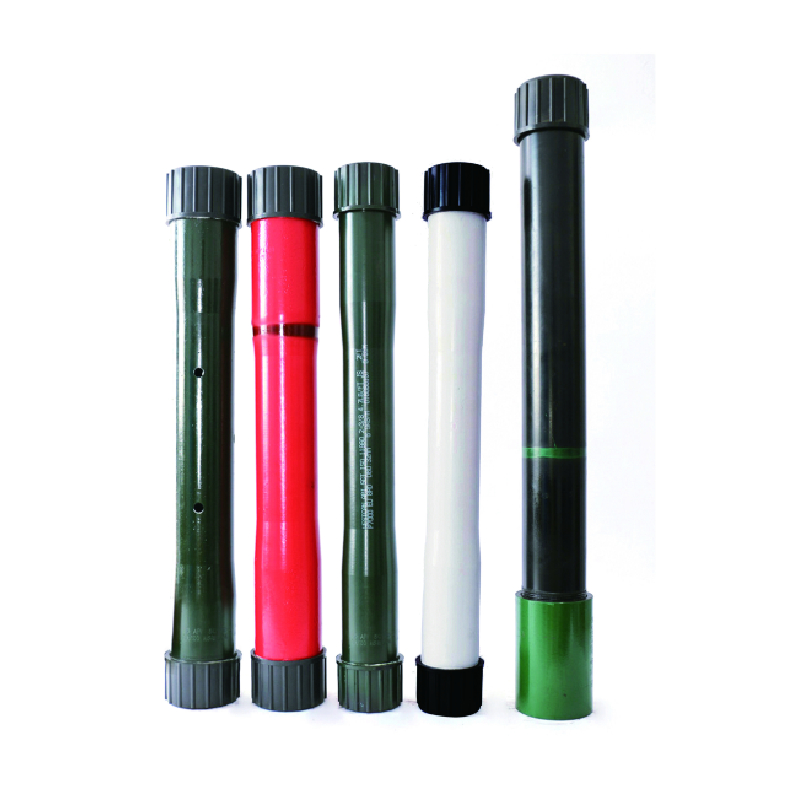
Image: A range of tubing pup joints ready for deployment.
Leading manufacturers distinguish themselves by their engineering expertise and production flexibility. They possess the capability to:
- Fabricate Custom Lengths: Precise lengths, down to fractions of an inch, to ensure optimal space-out and eliminate the need for on-site cutting.
- Source Specialty Materials: Access to a wide range of exotic alloys or high-chrome steels for highly corrosive or high-temperature environments.
- Produce Non-Standard Connections: Ability to machine proprietary or non-API threads to integrate seamlessly with specific downhole equipment.
- Apply Custom Coatings: Specialized internal or external coatings for enhanced corrosion resistance, reduced friction, or prevention of paraffin/scale buildup.
A key aspect of comparison among pup joint manufacturers is their responsiveness to these custom requests, their lead times for specialized orders, and their technical support throughout the design and production phases. Manufacturers with strong R&D departments and dedicated engineering teams are typically better equipped to handle such complexities, offering consultative services to ensure the optimal solution for each unique application. This collaborative approach not only delivers a superior product but also builds enduring partnerships based on mutual trust and technical excellence.
Frequently Asked Questions (FAQs)
Q1: What is the primary purpose of a tubing pup joint?
A1: A tubing pup joint is primarily used to adjust the overall length of a tubing or casing string in a well. They come in precise, non-standard lengths, enabling operators to achieve exact spacing for downhole equipment, compensate for variances in standard pipe lengths, or accurately position tools like packers and safety valves. This flexibility is crucial for optimal well completion and production in pup joint oil and gas operations.
Q2: What material grades are typically used for pup joints?
A2: Pup joints are commonly manufactured from seamless steel pipes conforming to API Spec 5CT standards. Common material grades include J55, K55, N80 (Type 1 and Q), L80 (Type 1, 9Cr, 13Cr), P110, and Q125. The selection of the grade depends on the specific well conditions, such as pressure, temperature, and corrosive elements (e.g., H2S, CO2).
Q3: How do I ensure the quality of pup joints from a manufacturer?
A3: To ensure quality, look for pup joint manufacturers with certifications like API Spec 5CT and ISO 9001. Verify their quality control processes, including Non-Destructive Testing (NDT) such as MPI, UT, and ECT, as well as hydrostatic pressure testing. Request material traceability reports and performance data. Client testimonials and their service history also provide strong indicators of reliability and trustworthiness.
Q4: What is the typical delivery period for custom pup joints?
A4: The delivery period for custom pup joints can vary significantly based on the complexity of the order, material availability, and the manufacturer's current production schedule. While standard lengths might have shorter lead times (e.g., 2-4 weeks), custom lengths or specialized material grades might require 6-12 weeks or more. It is always recommended to discuss specific lead times directly with the manufacturer at the inquiry stage to align with project timelines.
Commitment to Excellence: Delivery and Warranty
The supply chain for critical oil and gas components, including tubing pup joint products, demands efficiency and transparency. Reputable pup joint manufacturers understand the time-sensitive nature of energy projects and prioritize streamlined logistics. They typically offer clear communication regarding production timelines and provide comprehensive tracking for shipments, ensuring on-time delivery to project sites worldwide. Their commitment extends to secure packaging, utilizing robust crating and thread protectors to prevent damage during transit, preserving the integrity of each unit until deployment.
Beyond timely delivery, a robust quality assurance program is backed by a clear warranty policy. Leading manufacturers stand by the quality and performance of their pup joints, offering guarantees against manufacturing defects and material failures under normal operating conditions. This commitment reflects confidence in their engineering, materials, and production processes. Comprehensive customer support is also a hallmark, providing technical assistance and problem-solving capabilities throughout the product's lifecycle. This holistic approach from order to post-delivery support instills significant trust and ensures long-term operational reliability for clients globally.
References
- American Petroleum Institute (API) Standards 5CT and 5B.
- ISO 9001 Quality Management Systems – Requirements.
- Petroleum Engineering Handbook, Volume II: Drilling Engineering, Society of Petroleum Engineers.
- NACE International Standards on Corrosion Control in Oil and Gas Production.
-
Tubing Crossover - API Compatible, Custom Sizes, In StockNewsNov.10,2025
-
Tubing Coupling | High-Strength, Leak-Proof Steel CouplingsNewsNov.10,2025
-
Wholesale API Threading Casing Coupling | API 5CT, Fast ShipNewsNov.10,2025
-
Pup Joint Supplier | API Certified, Custom, Quick ShipNewsNov.10,2025
-
Pup Joint Manufacturers | Precision Machined, Fast DeliveryNewsNov.10,2025
-
Tubing Coupling | Precision Steel, Leak-Proof, Fast DeliveryNewsNov.03,2025
